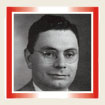|
Page 1 |
2 |
3 |
4 |
5 |
6
"No oil in Alberta" was the cry, in 1946, from
Imperial Oil's headquarters in Toronto. Even its
parent's guru, Lewis G. Weeks, referred to western
Canada as an over-aged, barren woman with no
prospects below the Cretaceous. Who would dare to
criticize that erstwhile prestigious firm and its
"experts"? After all, Imperial's Saskatchewan
campaign had ended the year before in dismal failure
- its enormous structures having resulted from
differential solution of salt beds that left large
mesas as drilling decoys, with nothing in them.
Alberta activity was confined to drilling on seismic
anomalies only, simply because O. B. Hopkins, Vice
President of Exploration, ordered that there be
geophysical justification, no matter how vague.
Imperial Oil was running out of ideas as to how and
where to look for oil!
However, the company's geologic
knowledge-workers were not about to give up.
Theories ran rampant! "Lewis liked hinge lines. He
centered on the Cretaceous as the source of oil,"
said Wallace Pratt, geologist. Jack Webb and Bill
Hancock, also geologists, disputed Lewis Weeks'
hinge-line theory that the Western Canada
Sedimentary Basin took a sharp dip to form a
hinge-like line along which sedimentary sand traps
could accumulate and might be oil-bearing. They
further proved that this did not, and could not,
occur - at least in Canada. However, Weeks redeemed
himself as a knowledgeable oil-finder when he
discovered the offshore Bass Field in Australia.
Then there was Ted Link, a strong
proponent of deep stratigraphic tests, who sent
questionnaires in May 1946 to 32 Alberta geological
staff to elicit their opinions. Meanwhile, hundreds
of miles to the north, at Norman Wells, Oswald
Desmond Boggs, friend and colleague of Link, had
made a startling discovery while working on the
CANOL Project of WWII. Boggs, a Queen's graduate who
had studied reefs in SouthAmerica, had identified
the Kee Scarp formation at Norman Wells as a reef,
over the doubts of Link and Hopkins. Dr. Charles R.
Stelck, University of Alberta professor, in a 1975
lecture on the CANOL Project told of the reaction to
Boggs' findings:
...I heard rumours,
accompanied by loud laughter, that this crazy
geologist up there at Norman Wells had gone bushed
and thought the reservoir was a coral reef - a coral
reef in the Arctic, when everybody knew that coral
were confined to the Tropics...
Polar wandering had not been
theorized then! Stelck confirmed that neither Link
nor Hopkins believed Boggs. They sent Stelck out
with sled dogs to check the Kee Scarp formation
outcrop (the Norman Wells producing horizon) for
reefal indicators. He returned to state that it was,
indeed, coralline, vindicating Boggs.
In the meantime, while this
geological bantering was going on, Imperial's "no
oil in Alberta" mind-set had spawned plans to
construct a Fischer-Tropsch synthetic gasoline plant
in Edmonton. The company already had a stranglehold
on gasoline retailing and was ready to do anything
to retain that position. Plans began under the
direction of newly-imported Mike Haider, one of
Jersey's few natural gas experts. His mandate: to
run Imperial's operations in Western Canada. There
seems to be no doubt that Imperial's request for
200,000 acres east, west, and south of Edmonton
(Reservation #350), in April 1946, was directly
related to finding gas for the proposed plant, as
was its geophysical program. Issuance of these
concession-type blocks of land required only
geological and geophysical commitments.
 Ray
Walters, born in Gorgona, Canal Zone, Panama, and
one of Carter's1
top geophysicists, was already on the scene, having
arrived in 1945 to head up geophysical
reconnaissance. (Although it was rumoured in
"cowtown"2
that his real mission was to shut down Imperial's
exploration program after three other Carter men had
refused this distasteful task.) Ray
Walters, born in Gorgona, Canal Zone, Panama, and
one of Carter's1
top geophysicists, was already on the scene, having
arrived in 1945 to head up geophysical
reconnaissance. (Although it was rumoured in
"cowtown"2
that his real mission was to shut down Imperial's
exploration program after three other Carter men had
refused this distasteful task.) Peter Bediz, classmate of Ray at the Colorado School
of Mines, described him as one who never took
anyone's word - he had to satisfy himself by first
checking in all other directions. He was certainly a
controversial figure, praised by some and vilified
by others, but always sure of himself.
Peter Bediz, classmate of Ray at the Colorado School
of Mines, described him as one who never took
anyone's word - he had to satisfy himself by first
checking in all other directions. He was certainly a
controversial figure, praised by some and vilified
by others, but always sure of himself.
[Next>>] |
 Heritage Community Foundation Presents
Heritage Community Foundation Presents


 Heritage Community Foundation Presents
Heritage Community Foundation Presents